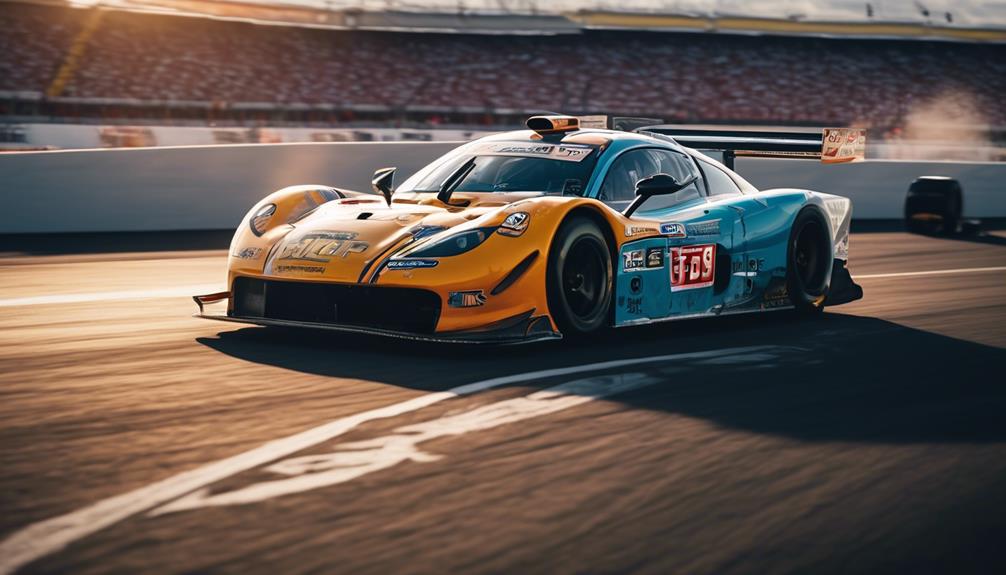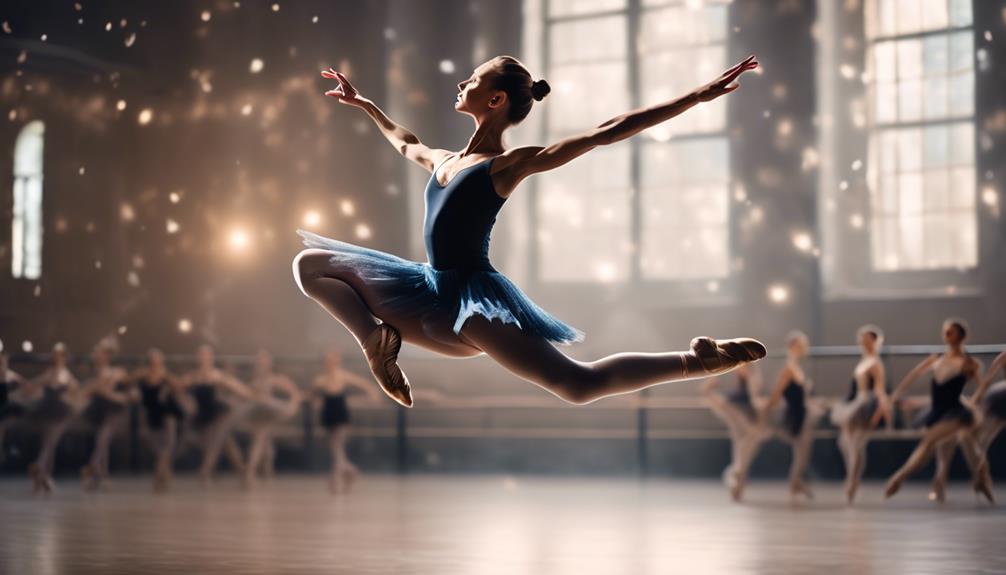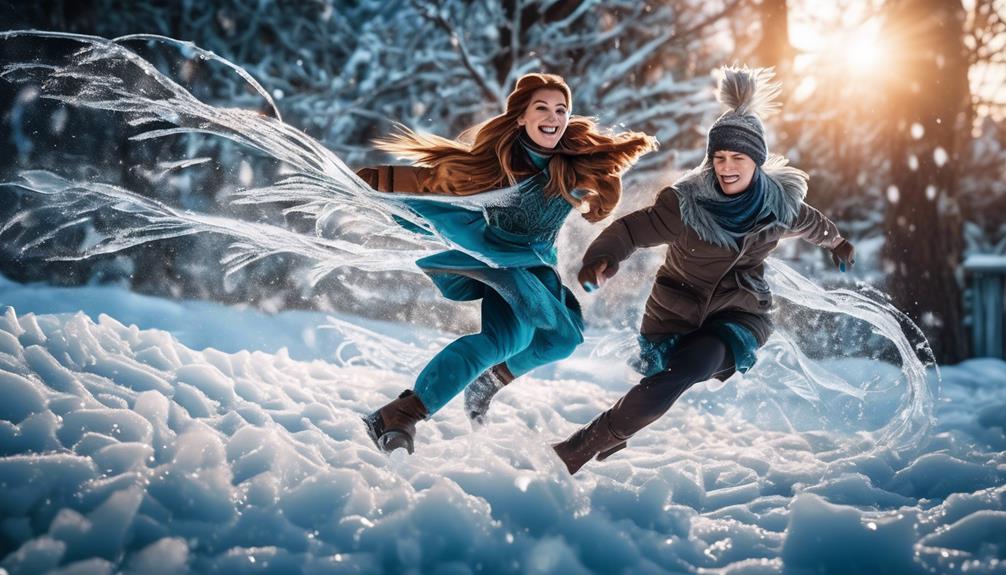Please note this post may contain affiliate links picked by me (Jay) that I have deemed may be of interest or relevant to you the reader of this.
These links do not affect the cost of the thing if you decide to purchase but i may get a little money if you choose to purchase.
For more information on my affiliate link policy click here.
As I stood on the edge of the bustling city street, camera in hand, I couldn't help but marvel at the endless possibilities that lay before me. Capturing the essence of motion photography is like capturing a fleeting moment frozen in time, a moment that tells a story without words.
Today, I want to share with you my top shutter speed tips for bringing your action shots to life. From freezing fast-paced sports to creating mesmerizing motion blur, I'll guide you through the intricacies of shutter speed, helping you unlock the full potential of your camera.
So, join me as we embark on a journey to capture the beauty and excitement of the world in motion.
Key Takeaways
- Shutter speed is crucial for capturing motion photography.
- Using a tripod stabilizes the camera for sharp action shots.
- Faster shutter speeds freeze action for sharp and clear images.
- Slow shutter speeds create motion blur for conveying movement.
Understanding Shutter Speed Basics
Understanding the basics of shutter speed is crucial for capturing stunning motion photography. As an avid photographer myself, I've discovered that mastering the art of shutter speed opens up a whole new world of creative possibilities.
One of the first things to consider is the shutter speed settings for low light photography. In low light situations, such as shooting indoors or during sunset, a slower shutter speed is needed to allow more light to enter the camera sensor. This helps to avoid underexposed images and capture clear, well-lit shots.
On the other hand, if you want to experiment with long exposure shots, adjusting your shutter speed is essential. Long exposure shots are perfect for capturing the mesmerizing trails of light in night photography or creating dreamy, silky water effects in landscapes. To achieve this, set your camera to a slow shutter speed, usually ranging from a few seconds to minutes. The longer the exposure, the more light is captured, resulting in beautiful, ethereal images.
To adjust the shutter speed on your camera, simply access the manual mode or shutter priority mode. In these modes, you have full control over the shutter speed settings. Start by selecting a slower shutter speed for low light situations or long exposure shots, and then experiment with different speeds to achieve the desired effect.
Understanding shutter speed basics is the first step towards mastering motion photography. It allows you to capture the essence of movement, freeze fast action, or create artistic motion blur. So, don't be afraid to venture into the world of shutter speed and let your creativity soar!
Selecting the Right Shutter Speed for Action Shots
Looking to capture action shots that freeze fast-moving subjects in their tracks? Let's dive into the world of shutter speed and discover how to select the perfect setting to capture the perfect moment.
When it comes to action shots, selecting the right shutter speed is crucial. It determines whether you freeze the motion or capture the blur of movement. Here are three key factors to consider when choosing the ideal shutter speed for action shots:
- Importance of using a tripod for action shots:
To ensure sharpness in your photos, it's essential to stabilize your camera. Using a tripod allows you to keep your camera steady, especially when using slower shutter speeds. This ensures that your subject remains in focus while the background blurs, creating a sense of motion and energy.
- Using burst mode for capturing fast-moving subjects:
Burst mode, also known as continuous shooting mode, is a fantastic feature for capturing action shots. By holding down the shutter button, your camera takes a rapid series of shots in quick succession. This increases your chances of capturing the perfect moment, especially when your subject is moving quickly. Burst mode allows you to select the best frame from the sequence, ensuring you don't miss any crucial details.
- Experimenting with different shutter speeds:
To capture the desired effect, it's important to experiment with different shutter speeds. For freezing fast action, try using a faster shutter speed, such as 1/1000th of a second or higher. This will ensure that your subject is sharp and clear, with no motion blur. On the other hand, if you want to convey a sense of motion, try using a slower shutter speed, such as 1/60th of a second or lower. This will create a beautiful blur effect, emphasizing the movement in your photos.
Freezing Motion With Fast Shutter Speeds
To freeze fast-moving subjects in action shots, utilizing fast shutter speeds is essential. When it comes to capturing the essence of movement in wildlife photography or achieving sharpness in fast-paced sports photography, fast shutter speeds play a crucial role. The ability to freeze motion allows us to capture those split-second moments that would otherwise be lost in a blur.
In fast-paced sports photography, where athletes are constantly in motion, using a fast shutter speed is vital to freeze their movements. By using a high shutter speed, such as 1/1000th of a second or faster, you can capture every detail with precision. Whether it's a player diving for the ball or a sprinter crossing the finish line, freezing the action will create images that are both dynamic and captivating.
Similarly, in wildlife photography, where animals are constantly on the move, fast shutter speeds are essential to capture their natural behavior. Whether it's a bird in flight or a cheetah running at full speed, freezing the motion will allow you to capture the energy and excitement of the moment. Using a high shutter speed, combined with good timing and tracking skills, will ensure that every feather or fur is sharp and detailed.
To achieve these fast shutter speeds, it's important to consider the lighting conditions and adjust your camera settings accordingly. Increasing your ISO, opening up your aperture, or using artificial lighting can help you maintain a fast shutter speed while still getting a properly exposed image. Additionally, using burst mode can increase your chances of capturing the perfect moment by taking a rapid series of shots.
Creating Motion Blur With Slow Shutter Speeds
Creating motion blur with slow shutter speeds adds a sense of dynamism and artistic flair to your photographs. By intentionally blurring the movement in your images, you can create stunning and visually captivating effects that will leave viewers in awe.
Here are three ways you can achieve artistic effects with long exposures and capture the beauty of flowing water with slow shutter speeds:
- Smooth Waterfalls: With a slow shutter speed, you can transform a turbulent waterfall into a silky cascade of water. By using a tripod to keep your camera steady, you can capture the motion of the water as it gracefully flows down the rocks. The result is a dreamy and ethereal image that showcases the beauty and tranquility of nature.
- Misty Seas: When photographing the ocean, using a slow shutter speed can create a misty and ethereal effect. By allowing the waves to blur together, you can capture the energy and power of the sea in a way that's both dramatic and captivating. This technique is perfect for capturing the beauty of crashing waves and the ever-changing tides.
- Light Trails: Slow shutter speeds are ideal for capturing the trails of lights in nighttime cityscapes or busy streets. By using a tripod and a long exposure, you can capture the movement of cars, bicycles, or even people, creating streaks of light that add a dynamic and energetic element to your photographs.
Experimenting With Shutter Speed to Capture Dynamic Movement
By adjusting the shutter speed settings on your camera, you can capture the dynamic movement of your subject in a way that adds excitement and energy to your photographs. Experimenting with different shutter speeds opens up a world of creative possibilities, allowing you to freeze action or blur movement to convey a sense of speed and motion.
One technique to consider is using long exposure settings to capture light trails. This is particularly effective when photographing moving vehicles at night. Set your camera on a tripod and choose a slow shutter speed, such as 1-2 seconds. As the cars pass by, their headlights and taillights will create beautiful streaks of light, adding a dynamic element to your images. Experiment with different exposure times to achieve the desired effect.
Another technique to try is using the panning technique to convey a sense of speed in your photographs. This involves following your subject's movement with your camera while using a slower shutter speed. By keeping your subject in focus while blurring the background, you can create a sense of motion and energy. To achieve this, choose a shutter speed around 1/30th of a second or slower and pan your camera along with the subject's movement. Practice is key to mastering this technique, so don't be discouraged if your first attempts don't turn out as expected.
Frequently Asked Questions
How Does the Aperture Settings Affect the Choice of Shutter Speed for Motion Photography?
When it comes to motion photography, the choice of shutter speed is crucial.
But did you know that the aperture settings also play a significant role? The aperture controls the amount of light entering the camera, which affects the exposure and depth of field.
By adjusting the aperture, you can achieve the desired balance between freezing the motion and capturing a blurred background.
What Are the Best Camera Settings to Capture Fast-Moving Subjects in Low Light Conditions?
When it comes to capturing fast-moving subjects in low light conditions, the key is to have the best camera gear. Investing in a camera with a high ISO capability and a wide aperture lens is crucial.
Additionally, utilizing a fast shutter speed will help freeze the motion and minimize blur. To make the most out of these settings, it's important to practice and experiment with different techniques.
With the right camera gear and some handy tips, you'll be able to capture stunning images of fast-moving subjects in low light conditions.
Are There Any Specific Camera Techniques to Minimize Camera Shake and Achieve Sharp Images With Slow Shutter Speeds?
When it comes to achieving sharp images with slow shutter speeds, camera stabilization techniques are crucial. By using a tripod or image stabilization technology, you can minimize camera shake and capture clear shots.
Additionally, adjusting the ISO settings is important, especially in low light conditions. Increasing the ISO allows for faster shutter speeds, reducing the risk of motion blur.
These techniques will help you capture stunning images even in challenging lighting situations.
Can I Achieve Motion Blur in My Photographs Without Using a Tripod?
I'm thrilled to tell you that achieving motion blur in your photographs without using a tripod is absolutely possible! By harnessing the power of natural light and getting creative with your techniques, you can capture stunning images that beautifully convey the sense of movement.
From panning to long exposures, there are endless possibilities to explore. Let your imagination run wild and embrace the challenge of capturing motion in unique and innovative ways.
Are There Any Recommended Post-Processing Techniques to Enhance the Effect of Motion in Photographs Captured With Different Shutter Speeds?
There are definitely some recommended post-processing techniques to enhance the effect of motion in photographs captured with different shutter speeds.
One technique is to use motion blur filters or tools in editing software to add more movement to your images.
Another option is to experiment with layering multiple exposures to create a sense of motion.
Additionally, adjusting the saturation and contrast of your photos can help enhance the overall impact of the motion.
These techniques can truly take your motion photography to the next level!
Conclusion
In the world of photography, mastering shutter speed is like wielding a magic wand. It allows you to freeze a moment in time or create a whirlwind of movement.
Just like a conductor leading an orchestra, the photographer controls the tempo of the image. With the right shutter speed, you can capture the energy of a racing car or the grace of a dancer.
So grab your camera and let your imagination run wild as you explore the endless possibilities of motion photography.


